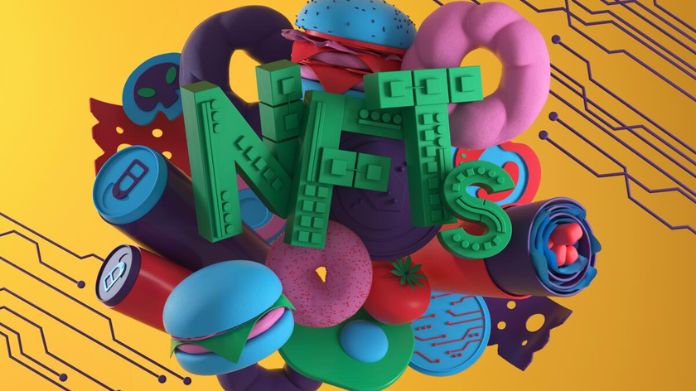News
Why Are Museums Embracing NFTs: The Digital Revolution
Explore the amzing world where art and technology converge. Delve into why museums are embracing NFTs & revolutionize and preserve creativity.

Have you ever considered art and technology coming together to create something exciting? Well, that’s exactly what’s happening as museums are embracing NFTs.
Museums, long seen as stewards of history, are now embracing game-changing phenomena known as Non-Fungible Tokens, or NFTs.
These blockchain-based digital assets alter how we view, maintain, and interact with art.
Get ready to know how these two worlds collide and shape the future of art appreciation with Hackzon.
What is the News?
In the not-so-distant future, every museum will create its digital version within the metaverse, as suggested by Dmitry Ozerkov, who oversees the contemporary art department at the State Hermitage Museum.
Ozerkov is working on the “Celestial Hermitage,” a digital adaptation of the renowned Russian museum.
This digital space will feature unique pieces of art known as non-fungible tokens (NFTs).
In an exclusive conversation with Cointelegraph, Ozerkov shared, “We’re all transitioning to the digital age, and our digital counterpart will be with us wherever we go.”
The State Hermitage Museum, located in Saint Petersburg, Russia, is the world’s largest museum in terms of gallery space and holds about 3 million artworks.
In September 2021, the museum ventured into the world of NFTs by selling five digital copies of its most famous masterpieces as NFTs, raising nearly $450,000.
In November, the Hermitage introduced its first digital exhibition, ‘ The Ethereal Aether.’ This exhibition showcases 38 NFTs set within a digital reconstruction of the museum.
Unlike the physical museum, where visitors can only view the displayed artworks, the virtual exhibition allows visitors to engage with the NFTs on display.
Ozerkov explained, “In the virtual realm, you can explore freely, play around with the artworks, make them interactive, and add additional information.”
The virtual exhibition is accessible online for free until December 10th. Ozerkov emphasizes that the Hermitage’s interest in NFTs goes beyond the market trends.
It seeks to delve into the artistic value that NFTs can bring to the contemporary art scene.
“My idea was to take existing artworks from the marketplace and place them within the museum’s digital space.
This way, we can ponder: What remains in these artworks as art? Is there any essence of art, or is our appreciation solely based on their monetary value?”
Who is Embracing NFTs

The famous British Museum, known for its historical treasures, is getting modern by teaming up with a digital game called The Sandbox.
They’re making special digital NFTs that show off their amazing collections. These NFTs let people experience history and art in new and fun ways.
The Sandbox’s co-founder, Sebastien Borget, said this is an excellent way for people worldwide to enjoy the British Museum’s cool stuff.
They’re not new to NFTs – they worked with a French startup called LaCollection before to show off famous artworks.
This move is helping the British Museum connect with new fans, save important cultural things, and get funds for their projects by joining the Sandbox.
They’re joining other famous names like Snoop Dogg, McDonald’s, Adidas, and Gucci, who do incredible things with technology.
It shows the British Museum likes trying new stuff and making fun experiences for everyone.
Are Other Museums Embracing NFTs?
Yes, many other museums are also embracing NFTs (Non-Fungible Tokens).
Using blockchain technology, these digital tokens represent ownership of unique digital items, like artwork or collectibles.
Museums worldwide recognize the potential of NFTs to engage new audiences and create innovative experiences.
For example, the State Hermitage Museum in Russia created a digital version called the “Celestial Hermitage” to showcase NFT art.
France’s vibrant art scene is home to the Centre Pompidou, a prominent museum known for its modern collections.
The museum boldly ventured into blockchain and NFTs (Non-Fungible Tokens) this spring.
Through a groundbreaking exhibition, they featured coveted NFT collections, including well-known pieces like CryptoPunks and Autoglyphs.
By incorporating NFTs into their permanent display, the Centre Pompidou showcased their dedication to exploring the intersection of art and blockchain technology. It established them as pioneers in the digital art landscape.
In Ukraine, the Kharkiv Art Museum, a historic cultural institution, embraced NFTs for a meaningful purpose.
Recognizing NFTs’ potential as fundraising tools, the museum launched its own NFT collection to support its operations and preserve the country’s cultural heritage.
The Kharkiv Art Museum attracted art enthusiasts worldwide to contribute to its noble cause by tokenizing unique artworks.
Across Belgium, the Royal Museum of Fine Arts Antwerp splashed by becoming Europe’s first museum to tokenize a classic art masterpiece valued at millions of euros.
This groundbreaking move involved digitizing and tokenizing a timeless artwork, bridging the gap between traditional art and the digital realm.
Why Are Museums Embracing NFTs?
Museums really like NFTs for lots of good reasons.
1. Meeting New Friends

Museums such as the British Museum and Centre Pompidou know that NFTs are an excellent way to connect with younger folks who love digital stuff.
They can talk to people who might not visit regular museums using excellent techs like blockchain and the metaverse.
It helps them reach more people and spread the love for art and culture worldwide.
2. Finding More Money

When the pandemic made money tight, museums had to get creative. NFTs offer a new way to make money. They turn art into digital tokens that people collect.
It helps museums get into the NFT trend and get more money to keep things going and save important cultural things.
3. Making Learning Fun

Museums like the idea of using NFTs to make learning more fun. They can make excellent NFT exhibitions, like a 3D picture of the Rosetta Stone at the British Museum.
It’s like playing a game and learning at the same time!
4. Keeping Art Safe and Sharing It

Some museums, like the Royal Museum of Fine Arts Antwerp and the Kharkiv Art Museum, use NFTs to keep art safe.
They turn art into unique tokens on the computer called blockchain. It holds art safe from bad things and lets more people see it from all around the world.
5. Being Cool and Leading the Way

When museums use NFTs, they show they’re hip to new technology. They’re like the cool kids in the tech playground.
They’re leading the way in using art and cool tech together, which gets them high-fives from art fans worldwide.
6. Saying NFTs are OK

When famous museums like the British Museum and Centre Pompidou say NFTs are reasonable, it makes NFTs look cooler.
Museums make NFTs seem more severe and unnatural for everyone. They show NFTs can be a smart way to keep and share art, which makes people feel better about them.
Wrap Up!!
Museums are getting super excited about Embracing NFTs and blockchain. They’re doing all sorts of cool stuff, from showing art in digital ways to raising money for good things.
The way each museum does it is extraordinary. It shows how NFTs are changing the art world in a big way.
This fabulous trend is happening all over the world. It’s changing how museums take care of art and share it with everyone.
NFTs are not just a short-lived fad. They’re a powerful tool shaping art and culture’s future.
It’s like a significant shift in how we appreciate and enjoy cool things from the past.
















